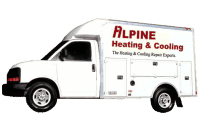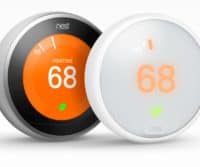
A programmable thermostat is ideal for people who are away from home during set periods throughout the week. Through proper use of pre-programmed settings, a programmable thermostat can save you about $180 every year in energy costs in Skagit Valley.
How Do You Choose the Right Programmable Thermostat or You?
To decide which model is best for you, think about your schedule and how often you are away from home for regular periods—work, school, other
activities—and then decide which of the three different models best fits your schedule:
- 7-day models are best if your daily schedule tends to change; for example, if
children are at home earlier on some days. These models give you the most
flexibility and let you set different programs for different days—usually with four
possible temperature periods per day. - 5+2-day models use the same schedule every weekday, and another
for weekends. - 5-1-1 models are best if you tend to keep one schedule Monday through Friday
and another schedule on Saturdays and Sundays.
Programmable Thermostat Settings
You can use the table below as a starting point for setting energy-saving temperatures and then adjust the settings to fit your family’s schedule and stay comfortable.

Get the Greatest Benefit from Your Programmable Thermostat
- Install your thermostat away from heating or cooling registers, appliances,
lighting, doorways, fireplaces, skylights and windows, and areas that receive
direct sunlight or drafts. Interior walls are best. - Keep the thermostat set at energy-saving temperatures for long periods of time,
such as during the day when no one is home and at bedtime. - Set the “hold” button at a constant energy-saving temperature when going
away for the weekend or on vacation. - Resist the urge to override the pre-programmed settings. Every time you do, you
use more energy and may end up paying more on your energy bill. - Use a programmable thermostat for each zone of your house if you have
multiple heating and cooling zones. This will help you maximize comfort,
convenience, and energy savings throughout the house. - Change your batteries each year if your programmable thermostat runs on
batteries. Some units will indicate when batteries must be changed.
If you have a heat pump, you may require a special programmable thermostat to maximize your energy savings year-round. Talk to your retailer or contractor for details before selecting your thermostat.
If you have a manual thermostat, you can adjust the temperatures daily before you leave the house and when you go to sleep at night. Typically, adjusting temperatures 5 – 8 degrees (down in winter, up in summer) can help save energy if you are going to be away from home for several hours.
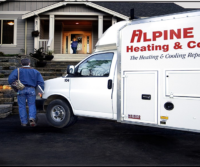
Dirt and neglect are the top causes of heating and cooling system inefficiency and failure in Skagit Valley. To ensure an efficient system
operation, it’s essential to maintain your HVAC system.
Change your air filter regularly. A clean filter will prevent dust and dirt from building up in the system, which can lead to expensive maintenance and early system failure. Check your filter every month, especially during winter and summer months, when use tends to be heavier. Change your filter if it’s dirty—or at least every three months to maintain your HVAC system properly.
Tune up your HVAC equipment. Proper maintenance by an Alpine Heating and Cooling qualified technician is one of the most important steps you can take to prevent future problems. We get busy during the summer and winter months, so it is best to check the cooling system in spring and the heating system in the fall. Plan the checkups around the beginning and end of daylight-saving time each spring and fall.
Overall HVAC System Maintenance Checklist
- Check thermostat settings to ensure the heating and cooling system turns
on and off at the programmed temperatures. - Tighten all electrical connections and measure voltage and current on
motors. Faulty electrical connections can cause your system to operate
unsafely and reduce the life of major components. - Lubricate moving parts. Parts that lack lubrication cause friction in motors
and increase the amount of electricity you use. Lack of lubrication can also
cause equipment to wear out more quickly, requiring more frequent repairs
or replacements. - Check and inspect the condensate drain in your central air conditioner,
furnace, and heat pump (when in cooling mode). If plugged, the drain
can cause water damage in the house, affect indoor humidity levels, and
breed bacteria and mold. - Check system controls to ensure proper and safe operation. Check the starting
cycle of the equipment to assure the system starts, operates, and shuts
off properly. - Inspect, clean, or change the air filter in your central air conditioner, furnace,
and heat pump. Your contractor can show you how to do this yourself.
Depending on your system, your filter may be located in the duct system versus
the heating and cooling equipment itself.
Additional HVAC System-Specific Maintenance Activities
For Heating Systems:
- Inspect the flue piping for rusting and any disconnections or evidence of
back drafting. - Check all gas (or oil) connections, gas pressure, burner combustion, and heat
exchanger. Improper burner operation can be caused by a dirty burner or a
cracked heat exchanger—either can cause the equipment to operate less safely
and efficiently. Leaking gas (or oil) connections are also a fire hazard and can
contribute to health problems.
For Cooling Systems:
- Clean indoor and outdoor coils before warm weather starts. A dirty coil
reduces the system’s ability to cool your home and causes the system to run
longer, increasing your energy costs and shortening the life of your equipment. - Check your central air conditioner’s refrigerant charge and adjust it if
necessary to make sure it meets manufacturer specifications. Too much or too
little refrigerant charge can damage the compressor, reducing the life of your
equipment and increasing costs. - Clean and adjust blower components to provide proper system airflow. Proper
airflow over the indoor coil is necessary for efficient equipment operation
and reliability.
Alpine Heating & Cooling services all of Skagit Valley including Anacortes, La Conner, Mount Vernon, Sedro-Woolley, and Burlington. Contact us today to schedule maintenance for your HVAC system!
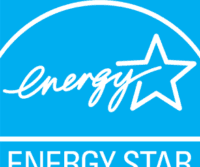
Consider Making a Change to Your HVAC System if Any of the Following Statements Apply
Some of your rooms are too hot or cold. Inadequate air sealing or insufficient insulation could be the cause. No matter how efficient your heating and cooling system is, if your home is not adequately sealed and insulated, you will not be as comfortable, and your system will have to work harder. Your home has humidity problems, excessive dust, or rooms that never seem to get comfortable. Leaky or poorly insulated ductwork might be the cause and reason to change your HVAC system.
Your equipment needs frequent repairs, and your energy bills are going up. In addition to the rise in energy costs, the age and condition of your heating and cooling equipment may have caused it to become less efficient. Call Alpine Heating & Cooling to take a look at your current system. Alpine can offer you solutions that work for your budget.
Your heating and cooling equipment is more than ten years old. Consider replacing it with newer, more efficient equipment. And remember, high-efficiency levels begin with ENERGY STAR.
You leave your thermostat set at one constant temperature. You could be missing a great energy-saving opportunity. You can set a programmable thermostat to adjust your home’s temperature at times when you’re regularly away or sleeping.
You used EPA’s ENERGY STAR Home Energy Yardstick to compare your household’s energy use to others across the country, and your score is below five. That means you’re using and paying for more energy at home than most Americans. Visit the ENERGY STAR Home Advisor to get recommendations for home improvement projects that will increase your score by improving your home’s energy efficiency and comfort.

Nothing is more frustrating than when your HVAC system stops working when you need it most, causing you to consider an emergency air conditioning and furnace repair or replacement. Not only is it stressful for you and your family to be without air conditioning or heat, but it can also be a financial strain. There are a few things you can do, however, before calling Alpine Heating & Cooling.
Emergency Air Conditioning and Furnace Repair Checklist
1: Check your furnace’s air filter – if you have not replaced or cleaned it in a while, you may want to purchase a new one, since a dirty filter can restrict airflow through your home.
2: Check your circuit breakers – the breaker switch may have tripped or shut off by accident. It is important to keep in mind that a tripped HVAC breaker may indicate a more serious issue, so schedule an inspection with us immediately.
3: Make sure the vents in your home are not obstructed – Blocked or closed vents can limit the airflow through your home.
4: Check the thermostat – if your thermostat uses a battery, it could need to be changed. You can also check to see if there is dust or dirt in the thermostat by removing the faceplate. If there is dust or dirt, use a can of compressed air to gently remove it. Also, frequently changing the temperature on the thermostat can cause the compressor in your system to overheat and shut down. To avoid this, be patient once you set your desired temperature. The system could take up to five minutes for the HVAC system to turn on.
If after going through this emergency HVAC repair checklist and your unit is still not functioning properly, it may be time to call us. A malfunctioning HVAC system could drive up your energy costs along with the expensive emergency furnace and air conditioning repairs. Time is of an essence. Alpine Heating & Cooling will travel to your home in our Skagit Valley service area to assess the HVAC system and create an estimate for the repair and complete the repair.
With all of the severe watches and warnings this winter in Skagit County, you may need help fast with your HVAC system! The freezing temperatures are expected to stick around. Skagit County has seen 2-6 inches of snowfall overnight Sunday and the snow will not be melting for several days. If you are having issues with your heating system, we can provide fast service.
Are you a new home owner in Anacortes, Burlington, Mount Vernon, La Conner or surrounding areas in Skagit county? If so, you understand how much those utility bills can impact your budget. The average household spends more than $2,200 a year on energy bills, with nearly half of this going to heating and cooling costs. It’s important to make smart decisions about your home’s heating, ventilating, and air conditioning (HVAC) system that can help save on energy costs, improve your overall comfort at home, and help fight global warming.
 Did you know the energy used in the average house is responsible for twice as many greenhouse gas emissions as the average car? When power plants burn fossil fuels to make electricity,they release greenhouse gases. By using less energy at home, you help reduce the emissions that contribute to global warming. ENERGY STAR is the government-backed program that helps us all save money and protect our environment with energy-efficient products and practices. Whether you are looking for recommendations about energy-efficient equipment, getting a quality installation, HVAC maintenance, or ways to make your heating and cooling system operate more efficiently, EPA’s ENERGY STAR program can help!
Did you know the energy used in the average house is responsible for twice as many greenhouse gas emissions as the average car? When power plants burn fossil fuels to make electricity,they release greenhouse gases. By using less energy at home, you help reduce the emissions that contribute to global warming. ENERGY STAR is the government-backed program that helps us all save money and protect our environment with energy-efficient products and practices. Whether you are looking for recommendations about energy-efficient equipment, getting a quality installation, HVAC maintenance, or ways to make your heating and cooling system operate more efficiently, EPA’s ENERGY STAR program can help!
Consider giving Alpine Heating and Cooling a call if any of these statements apply to you:
- Some of your rooms are too hot or cold.
- Your home has humidity problems, excessive dust, or rooms that never seem to get comfortable.
- Your equipment needs frequent repairs and your energy bills are going up.
- Your heating and cooling equipment is more than 10 years old.
- You leave your thermostat set at one constant temperature.
- You used EPA’s Energy Star Home Energy Yardstick to compare your household’s energy use to others acress the country and your score is below five.

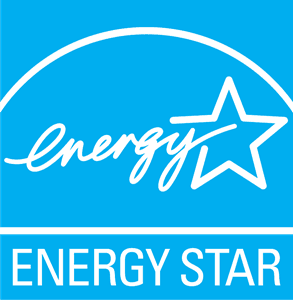 As much as half of the energy used in your home goes to heating and cooling. So making smart decisions about your home’s heating, ventilating, and air conditioning (HVAC) system can have a big effect on your utility bills — and your comfort. Take these steps to increase the efficiency of your heating and cooling system.
As much as half of the energy used in your home goes to heating and cooling. So making smart decisions about your home’s heating, ventilating, and air conditioning (HVAC) system can have a big effect on your utility bills — and your comfort. Take these steps to increase the efficiency of your heating and cooling system.
Change your air filter regularly
Check your filter every month, especially during heavy use months (winter and summer). If the filter looks dirty after a month, change it. At a minimum, change the filter every 3 months. A dirty filter will slow down air flow and make the system work harder to keep you warm or cool — wasting energy. A clean filter will also prevent dust and dirt from building up in the system — leading to expensive maintenance and/or early system failure.
Tune up your HVAC equipment yearly
Just as a tune-up for your car can improve your gas mileage, a yearly tune-up of your heating and cooling system can improve efficiency and comfort.
Install a programmable thermostat
A programmable thermostat is ideal for people who are away from home during set periods of time throughout the week. Through proper use of pre-programmed settings, a programmable thermostat can save you about $180 every year in energy costs.
Seal your heating and cooling ducts
Ducts that move air to-and-from a forced air furnace, central air conditioner, or heat pump are often big energy wasters. Sealing and insulating ducts can improve the efficiency of your heating and cooling system by as much as 20 percent — and sometimes much more.
Focus first on sealing ducts that run through the attic, crawlspace, unheated basement, or garage. Use duct sealant (mastic) or metal-backed (foil) tape to seal the seams and connections of ducts. After sealing the ducts in those spaces, wrap them in insulation to keep them from getting hot in the summer or cold in the winter. Next, look to seal any other ducts that you can access in the heated or cooled part of the house.
Consider installing ENERGY STAR qualified heating and cooling equipment
If your HVAC equipment is more than 10 years old or not keeping your house comfortable, have it evaluated by a professional HVAC contractor. If it is not performing efficiently or needs upgrading, consider replacing it with a unit that has earned the ENERGY STAR. Depending on where you live, replacing your old heating and cooling equipment with ENERGY STAR qualified equipment can cut your annual energy bill by more than $115. But before you invest in a new HVAC system, make sure that you have addressed the big air leaks in your house and the duct system. Sometimes, these are the real sources of problems rather than your HVAC equipment.
Contact Alpine Heat to ask about Proper Installation of your new equipment
Replacing your old heating and cooling equipment with new, energy-efficient models is a great start. But to make sure that you get the best performance, the new equipment must be properly installed. In fact, improper installation can reduce system efficiency by up to 30 percent – costing you more on your utility bills and possibly shortening the equipment’s life.
